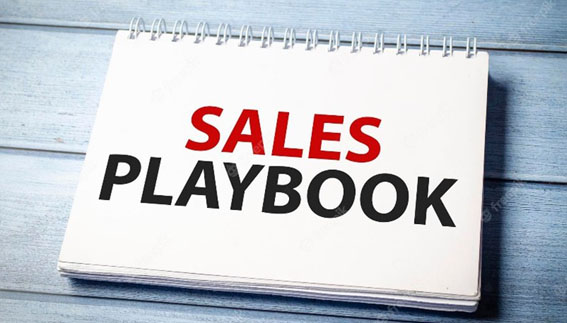In the world of sales, closing a big deal is the ultimate goal. But achieving that success requires more than just luck. It requires a well-thought-out strategy and a clear roadmap for salespeople to follow. That’s where a sales playbook comes in. A sales playbook is a comprehensive resource that outlines the roles, responsibilities, methods, tactics, and tricks that salespeople need to engage customers at every step of the buying journey. In fact, according to the Harvard Business Review, 50% of high-performing sales organizations have closely monitored and enforced sales processes, which is essentially what a sales playbook provides.
Getting Started: Building a Foundation for Success
Before diving into the creation of a sales playbook, there are a few important considerations to keep in mind:
- Playbooks complement onboarding and training
A sales playbook should not replace your company’s onboarding and training programs. Instead, it should serve as a valuable resource that complements these initiatives. While onboarding and training provide the foundation for salespeople to succeed, a playbook offers a centralized resource for them to access the right information at the right time.
- Collaboration is key
Creating an effective sales playbook is a team effort. It should not be the responsibility of a single person or business unit. To ensure a well-rounded and comprehensive playbook, it’s essential to involve team members from various departments, including sales and marketing. This collaborative approach will result in a playbook that reflects the collective knowledge and expertise of your organization.
- Appoint project owners
To ensure the successful development and implementation of a sales playbook, it’s crucial to have designated project owners. These individuals will be responsible for overseeing the creation of the playbook, ensuring that content is delivered on time, and facilitating the review and editing process. By having dedicated project owners, you can ensure that the playbook development stays on track and meets its intended goals.
- Start small and scale
Creating a sales playbook can be a daunting task, especially if you’re starting from scratch. To make the process more manageable, it’s recommended to start with a sales process that has already proven to be successful within your organization. By focusing on a well-established process, you can build repeatability and consistency, which can later be scaled and adapted to different sales scenarios.
Evaluate Your People and Processes: Gathering Insights for a Successful Playbook
Before diving into the actual content creation, it’s essential to assess the current state of your sales organization. Conduct interviews with your top-performing sales representatives to understand what has contributed to their success and the resources they have utilized. Similarly, gather insights from underperforming team members to identify any challenges they face during the sales process. These conversations will provide valuable insights into the environment in which your sales teams operate and how they leverage your company’s sales technology stack.
Utilize the information gathered from these interviews to document your sales processes and align them with the buying cycle. This will create a foundation for your sales playbook and ensure that the content is actionable and tailored to the specific needs of your salespeople. Additionally, identify any content or resource gaps that arise during these conversations and collaborate with the appropriate team members to address them. By the time your playbook is complete, these materials will be ready to be unveiled alongside it.
TIP: During these conversations, keep an eye out for any potential gaps in your content or resources so that you can connect with the appropriate team members early on to begin building this material. By the time you have finished your playbook, these materials will be finished (or near finished) so that you can unveil the full new suite of resources along with the sales playbook1.
Including Key Elements: Building a Comprehensive Sales Playbook
A successful sales playbook should provide salespeople with the necessary guidance and flexibility to engage buyers at every step of the journey. While there is no one-size-fits-all structure for a sales playbook, there are several key elements that you should consider including:
- Stages of the sales cycle
To provide a clear roadmap for salespeople, it’s essential to detail the stages of your company’s sales cycle within the playbook. For each stage, define the goal, strategies for successfully navigating the stage, and the necessary skills. Consider including general tips and information that are relevant to each stage. Some common stages may include prospecting, engaging, developing, and closing. Additionally, outline any specific steps or tasks that should be completed at each stage to ensure a smooth progression through the sales cycle.
- Essential activities per stage
Map out the main stages of your sales pipeline and align them with the responsibilities of your salespeople. While you don’t need to provide a comprehensive job description or step-by-step instructions, it’s important to provide general guidance for each stage. For example, outline the key activities and steps involved in closing a deal, such as ensuring a clear understanding of all proposals by reviewing them live and documenting any amendments. This will help salespeople stay on track and effectively move deals forward.
- Sales tools
Point your salespeople to the right resources they need to leverage throughout the sales process. This can include links to internal documents or resources, as well as external tools and applications that are frequently used. By providing easy access to these resources within the playbook, you can streamline the sales process and empower your sales team to effectively engage with prospects.
- Success stories
Including success stories in your sales playbook can be incredibly motivating for your sales team. Share anecdotes of deals that were closed thanks to quick-thinking salespeople who went above and beyond to showcase the value of your company’s solutions. Recognizing top performers and highlighting their creative approaches can inspire the rest of your team to strive for similar levels of creativity and success.
- Checklists for research and questions
To ensure that salespeople are well-prepared for each step of the sales journey, provide checklists of key information they should gather and questions they should ask. For example, suggest that salespeople research the prospect’s global presence, brand attributes, competitive landscape, and company growth before an introductory call or meeting. As the sales process progresses, salespeople will need to gather more specific information related to the prospect’s technology implementation and how it will drive results. By providing these checklists, you can ensure that salespeople have the necessary information to engage with buyers effectively.
Keep It Updated: The Importance of Regular Review and Adaptation
A sales playbook is not a static document. As your company evolves, your sales strategy and processes will also need to adapt. It’s essential to review and update your sales playbook regularly to account for these changes. Start by establishing a quarterly cadence for review, and adjust it based on your company’s unique needs and pace of change.
Leverage analytics tools to track and measure the effectiveness of your sales playbook. By capturing and analyzing engagement and outcome data, you can determine the impact of the playbook on your sales team’s success. Use this data to identify areas that may need improvement or further refinement. Regularly soliciting feedback from your sales team can also provide valuable insights and help ensure that the playbook remains relevant and effective.
Interested in learning more about how you can create a powerful sales playbook? Our platform, specifically designed to maximize sales pipeline visibility and track your team’s success, can help you take your sales game to the next level. Schedule a demo today to see what we can do for you1.
Conclusion
A well-developed sales playbook is a vital resource for maximizing sales efficiency and easing the onboarding process for new salespeople. By following the steps outlined in this guide, you can create a comprehensive sales playbook that provides your sales team with the guidance and flexibility they need to engage customers at every stage of the buying journey. Remember to evaluate your people and processes, include key elements such as stages of the sales cycle and essential activities, and regularly update and adapt your playbook to reflect the evolving needs of your organization. With a powerful sales playbook in hand, you’ll be well-equipped to achieve sales success and drive your business forward.
Schedule a demo today to see how our platform can help you create and optimize your sales playbook.

